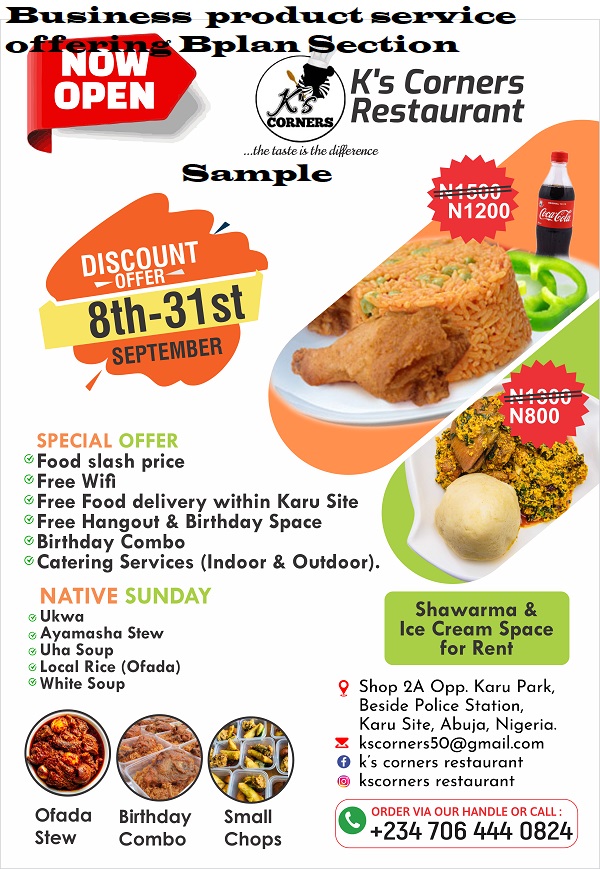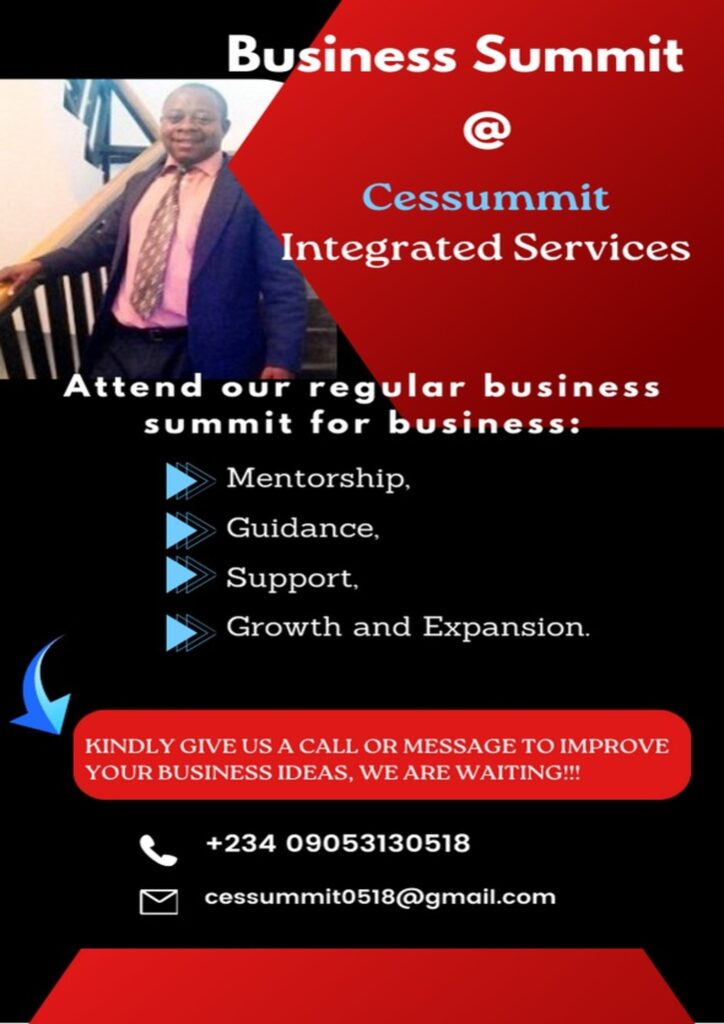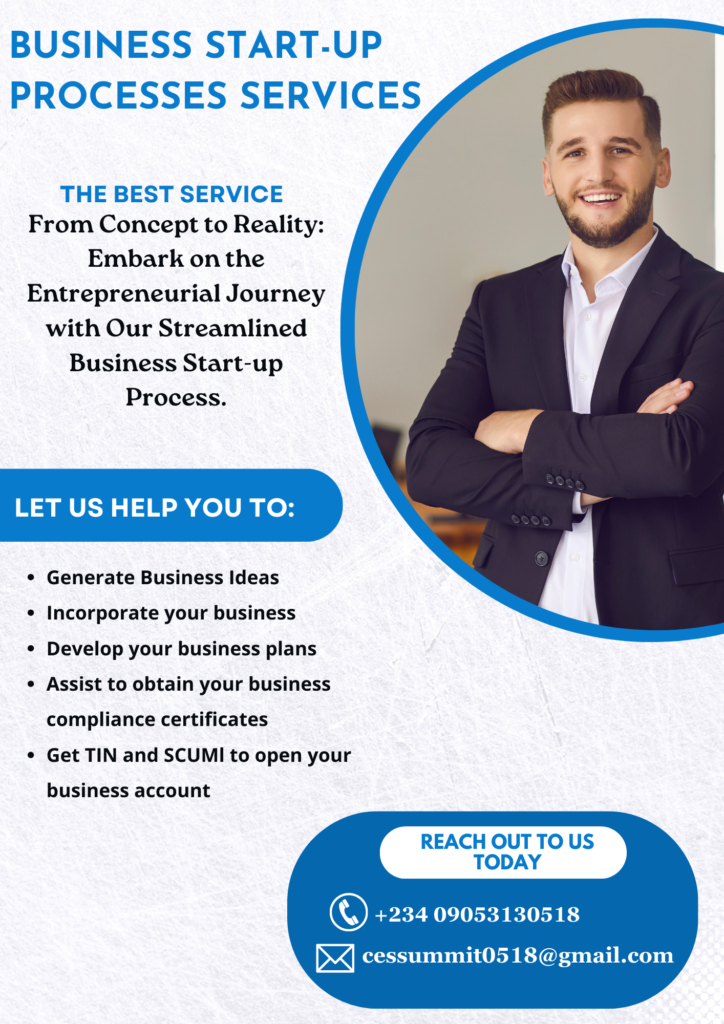
Unlocking Competitive Advantage for Best Practices in Product Development
Unlocking Competitive Advantage for Best Practices in Product Development – This article will deliberate on Unlocking Competitive Advantage for Best Practices in Product Development. In today’s fast-paced and ever-evolving business landscape, staying ahead of the competition is crucial for companies looking to thrive. One area where organizations can gain a significant competitive advantage is in product development.
The ability to efficiently and effectively bring innovative and high-quality products to market can make or break a company’s success. To unlock this advantage, businesses must embrace best practices in product development, harnessing the power of strategic planning, cross-functional collaboration, market research, and customer-centric design. By adopting these practices, companies can position themselves as industry leaders and drive sustainable growth in an increasingly competitive marketplace.
Contents
- 1 Post Focus:
- 1.1 Unlocking Competitive Advantage for Best Practices in Product Development
- 1.2 Importance of best practices in achieving competitive advantage
- 1.2.1 Unlocking Competitive Advantage for Best Practices in Product Development
- 1.2.2 Enhanced efficiency and effectiveness:
- 1.2.3 Quality and innovation:
- 1.2.4 Unlocking Competitive Advantage for Best Practices in Product Development
- 1.2.5 Risk reduction:
- 1.2.6 Continuous improvement:
- 1.2.7 Unlocking Competitive Advantage for Best Practices in Product Development
- 1.3 Unlocking Competitive Advantage for Best Practices in Product Development
- 2 Understanding Best Practices in Product Development
- 3 Identifying and Analyzing Competitive Advantage Factors
- 3.1 Conducting a competitive analysis
- 3.2 Unlocking Competitive Advantage for Best Practices in Product Development
- 3.3 Identifying unique selling points (USPs)
- 3.4 Unlocking Competitive Advantage for Best Practices in Product Development
- 3.5 Analyzing customer needs and market trends
- 3.6 Leveraging technology and innovation
- 3.6.1 Embrace emerging technologies:
- 3.6.2 Foster a culture of innovation:
- 3.6.3 Unlocking Competitive Advantage for Best Practices in Product Development
- 3.6.4 Collaborate with partners:
- 3.6.5 Continuous learning and improvement:
- 3.6.6 Unlocking Competitive Advantage for Best Practices in Product Development
- 3.6.7 Agile development processes:
- 3.6.8 Encourage experimentation:
- 3.6.9 Unlocking Competitive Advantage for Best Practices in Product Development
- 3.6.10 Intellectual property protection:
- 3.6.11 Customer-driven innovation:
- 3.6.12 Unlocking Competitive Advantage for Best Practices in Product Development
- 3.6.13 Continuous investment in research and development:
- 3.7 Unlocking Competitive Advantage for Best Practices in Product Development
- 4 Implementing Best Practices for Competitive Advantage
- 4.1 Developing a structured product development process
- 4.2 Unlocking Competitive Advantage for Best Practices in Product Development
- 4.3 Creating cross-functional teams and collaboration
- 4.4 Unlocking Competitive Advantage for Best Practices in Product Development
- 4.5 Establishing effective project management techniques
- 4.6 Unlocking Competitive Advantage for Best Practices in Product Development
- 4.7 Emphasizing continuous improvement and learning
- 4.7.1 Foster a culture of innovation:
- 4.7.2 Collect and analyze feedback:
- 4.7.3 Unlocking Competitive Advantage for Best Practices in Product Development
- 4.7.4 Conduct post-launch evaluations:
- 4.7.5 Implement lessons learned:
- 4.7.6 Unlocking Competitive Advantage for Best Practices in Product Development
- 4.7.7 Promote professional development:
- 4.7.8 Regularly review and update best practices:
- 4.7.9 Unlocking Competitive Advantage for Best Practices in Product Development
- 4.8 Unlocking Competitive Advantage for Best Practices in Product Development
- 5 Case Studies: Companies with Successful Product Development Strategies
- 6 Overcoming Challenges in Implementing Best Practices
- 6.1 Resistance to change and organizational culture
- 6.2 Resource constraints and budget considerations
- 6.3 Balancing speed-to-market with quality assurance
- 6.3.1 Define quality standards:
- 6.3.2 Adopt agile methodologies:
- 6.3.3 Unlocking Competitive Advantage for Best Practices in Product Development
- 6.3.4 Automate testing processes:
- 6.3.5 Implement continuous integration and deployment:
- 6.3.6 Unlocking Competitive Advantage for Best Practices in Product Development
- 6.3.7 Foster a culture of quality:
- 6.4 Unlocking Competitive Advantage for Best Practices in Product Development
- 7 Measuring and Evaluating the Impact of Best Practices
- 7.1 Establishing key performance indicators (KPIs)
- 7.2 Conducting regular performance assessments
- 7.3 Adjusting strategies based on feedback and results
- 7.4 Unlocking Competitive Advantage for Best Practices in Product Development
- 7.5 Read More:
- 7.6 Summing up: Unlocking Competitive Advantage for Best Practices in Product Development
- 7.7 Share this:
- 7.8 Like this:
Post Focus:
Do you know that this article is a must read for you? So, Why will people read this post Unlocking Competitive Advantage for Best Practices in Product Development People will read this post, “Unlocking Competitive Advantage for Best Practices in Product Development,” for several compelling reasons.
Firstly, it addresses a topic of great relevance and importance in the business world: gaining a competitive advantage. In today’s fiercely competitive market, businesses are constantly seeking ways to outperform their rivals, and product development is a key battleground. The post promises to reveal valuable insights and strategies for unlocking this advantage, making it a valuable resource for entrepreneurs, product managers, and business leaders alike.
Additionally, the post emphasizes the significance of best practices in product development. Readers are likely to be interested in learning about proven methodologies and techniques that can enhance their product development processes. Whether they are seeking to streamline their workflows, improve product quality, or accelerate time-to-market, the post offers the promise of practical guidance to achieve these goals.
Unlocking Competitive Advantage for Best Practices in Product Development
Furthermore, the post highlights the benefits of adopting a customer-centric approach in product development. In an age where customer preferences and demands shape the success of businesses, understanding how to design products that truly resonate with consumers is essential. The post’s focus on customer-centric design principles and market research is likely to attract readers who recognize the importance of putting their customers at the center of their product development strategies.
Overall, this post offers a comprehensive and insightful exploration of unlocking competitive advantage through best practices in product development. It appeals to readers who are eager to gain a competitive edge, improve their product development processes, and deliver outstanding products that meet the needs of their target market.
Unlocking Competitive Advantage for Best Practices in Product Development
Competitive advantage refers to the unique qualities or attributes that set a product or company apart from its competitors and enable it to outperform them in the market. In the context of product development, competitive advantage can be achieved by creating products that offer superior value to customers in terms of quality, features, performance, price, or a combination of these factors. It involves developing a distinctive edge that makes customers perceive the product as more desirable, leading to increased market share, customer loyalty, and ultimately, higher profits.
Importance of best practices in achieving competitive advantage
Best practices play a crucial role in achieving competitive advantage in product development. These practices encompass a set of proven methods, techniques, and strategies that have been identified as the most effective and efficient ways to develop successful products. By adopting and implementing best practices, companies can enhance their product development processes, reduce costs, accelerate time-to-market, and improve overall product quality.
Unlocking Competitive Advantage for Best Practices in Product Development
Enhanced efficiency and effectiveness:
Best practices provide companies with structured frameworks and guidelines that optimize their product development activities. This leads to improved efficiency and effectiveness in various stages of the development process, such as ideation, concept development, design, prototyping, testing, and production. By streamlining these processes, companies can reduce waste, eliminate unnecessary steps, and allocate resources more effectively, resulting in cost savings and faster time-to-market.
Quality and innovation:
Best practices focus on fostering a culture of quality and innovation within the organization. They promote the use of robust design methodologies, advanced prototyping techniques, and rigorous testing procedures to ensure that products meet or exceed customer expectations. By consistently delivering high-quality and innovative products, companies can differentiate themselves from competitors and attract more customers.
Unlocking Competitive Advantage for Best Practices in Product Development
Risk reduction:
Best practices help companies identify and mitigate potential risks and challenges associated with product development. They emphasize the importance of market research, customer insights, and validation techniques to ensure that products align with market demands and address customer needs. By conducting thorough risk assessments and incorporating feedback from target users early in the development process, companies can minimize the likelihood of product failures or costly revisions.
Continuous improvement:
Best practices encourage a culture of continuous improvement in product development. They emphasize the importance of learning from past experiences, conducting post-launch evaluations, and gathering feedback from customers. By continuously analyzing and iterating upon product development processes, companies can identify areas for improvement, optimize their operations, and stay ahead of the competition.
Unlocking Competitive Advantage for Best Practices in Product Development
In general, adopting best practices in product development is vital for achieving competitive advantage. By leveraging these practices, companies can enhance efficiency, ensure product quality and innovation, reduce risks, and foster continuous improvement. This ultimately enables them to create products that outperform competitors and resonate with customers, leading to sustained success in the marketplace.
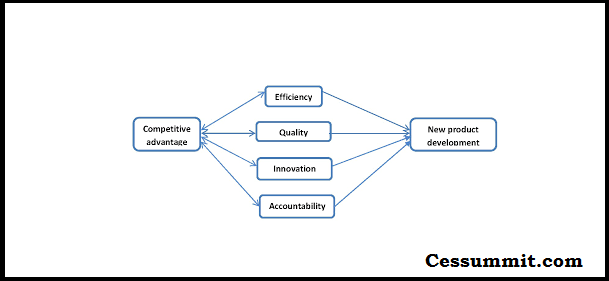
Unlocking Competitive Advantage for Best Practices in Product Development
Understanding Best Practices in Product Development
In this segment we will discuss factors underlining Understanding Best Practices in Product Development.
Definition and characteristics of best practices
Best practices in product development refer to a set of guidelines, methodologies, and approaches that have been proven to yield successful outcomes and drive competitive advantage. These practices are developed based on industry knowledge, research, and the experiences of successful organizations. They represent the most effective and efficient ways of developing products while maximizing value for both the company and its customers.
Characteristics of best practices include:
Proven effectiveness:
Best practices are based on empirical evidence and have been successfully implemented in real-world scenarios. They have demonstrated their ability to improve product development processes and outcomes.
Unlocking Competitive Advantage for Best Practices in Product Development
Industry alignment:
Best practices are aligned with industry standards, regulations, and emerging trends. They incorporate the latest advancements in technology, methodologies, and market understanding.
Adaptability:
Best practices are not rigid templates but flexible frameworks that can be adapted to suit the specific needs and context of each organization. They provide guidance while allowing for customization based on unique requirements.
Continuous improvement:
Best practices promote a culture of continuous improvement by encouraging organizations to evaluate and refine their processes regularly. They recognize that product development is an evolving field and emphasize the importance of learning from experience.
Unlocking Competitive Advantage for Best Practices in Product Development
Key components of successful product development best practices
Successful product development best practices typically include the following key components:
Cross-functional collaboration:
Best practices encourage collaboration and communication among different teams and departments involved in product development, such as engineering, design, marketing, and customer support. This collaboration facilitates the exchange of ideas, promotes a holistic approach to product development, and ensures that all perspectives are considered.
User-centered design:
Best practices prioritize understanding customer needs and preferences through user research and feedback. They emphasize the importance of conducting usability testing, user interviews, and surveys to gather insights that inform product design decisions. User-centered design ensures that products are intuitive, functional, and meet the expectations of the target audience.
Unlocking Competitive Advantage for Best Practices in Product Development
Agile and iterative approach:
Best practices advocate for an agile and iterative approach to product development. They promote the use of methodologies such as Agile, Scrum, or Lean, which involve breaking down the development process into smaller, manageable iterations. This approach enables faster feedback loops, allows for adjustments based on user feedback, and reduces the risk of developing products that miss the mark.
Robust project management:
Best practices emphasize effective project management to ensure that product development stays on track, within budget, and meets established timelines. This includes defining clear project objectives, setting realistic milestones, managing resources effectively, and facilitating communication and coordination among team members.
Continuous market research:
Best practices encourage organizations to stay informed about market trends, emerging technologies, and customer preferences. They emphasize the importance of conducting market research, competitor analysis, and trend analysis to identify opportunities and potential areas for differentiation.
Unlocking Competitive Advantage for Best Practices in Product Development
Identifying and Analyzing Competitive Advantage Factors
Conducting a competitive analysis
To identify competitive advantage factors, conducting a competitive analysis is crucial. This involves examining and evaluating competitors in the market to understand their strengths, weaknesses, strategies, and market positioning. The key steps in conducting a competitive analysis include:
Identify competitors:
Identify direct and indirect competitors operating in the same market or serving a similar customer base.
Gather information:
Collect relevant data about competitors, such as their products, pricing, distribution channels, marketing strategies, target customers, and market share. This information can be obtained through market research, industry reports, competitor websites, customer reviews, and social media.
Unlocking Competitive Advantage for Best Practices in Product Development
Analyze strengths and weaknesses:
Assess the strengths and weaknesses of each competitor, including their product features, quality, brand reputation, customer service, and market reach. Identify areas where competitors excel and where they fall short.
Identify opportunities and threats:
Based on the analysis, identify opportunities that exist in the market where your company can gain a competitive advantage. This could be through addressing unmet customer needs, offering unique features or benefits, or capitalizing on emerging market trends. Additionally, identify potential threats posed by competitors, such as their innovative products, strong market presence, or aggressive marketing strategies.
SWOT analysis:
Conduct a SWOT (Strengths, Weaknesses, Opportunities, and Threats) analysis to consolidate the findings from the competitive analysis. This analysis helps identify the internal strengths and weaknesses of your own company in relation to competitors, as well as the external opportunities and threats in the market.
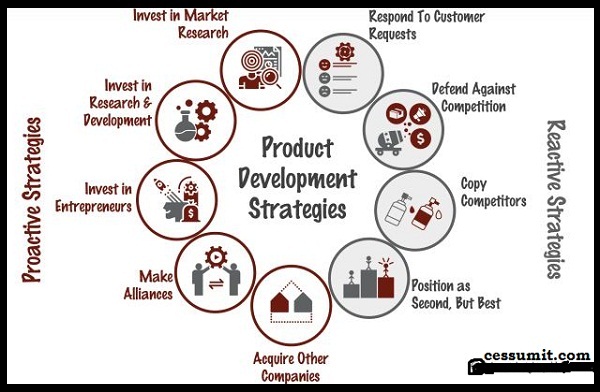
Unlocking Competitive Advantage for Best Practices in Product Development
Identifying unique selling points (USPs)
Unique Selling Points (USPs) are the distinct features or qualities of a product that differentiate it from competitors and provide a competitive advantage. To identify your product’s USPs, consider the following steps:
Understand customer needs:
Conduct market research, surveys, and interviews to gain a deep understanding of your target customers’ preferences, pain points, and desires. This will help identify the aspects of your product that are most important to them.
Evaluate competitor offerings:
Analyze the products and services offered by your competitors. Identify gaps or areas where your product can offer unique and valuable features or benefits that are not currently addressed by competitors.
Unlocking Competitive Advantage for Best Practices in Product Development
Focus on strengths:
Assess your product’s strengths, such as superior quality, innovative technology, cost-effectiveness, convenience, or exceptional customer service. Identify the aspects that set your product apart and provide value to customers.
Communicate value proposition:
Clearly articulate the unique selling points of your product in your marketing and communication strategies. Highlight the specific benefits and advantages that customers can expect from choosing your product over competitors.
Unlocking Competitive Advantage for Best Practices in Product Development
Analyzing customer needs and market trends
Understanding customer needs and staying updated with market trends are essential for identifying opportunities and maintaining a competitive advantage. Consider the following steps:
Market research:
Conduct thorough market research to gain insights into customer preferences, behaviors, and expectations. Utilize techniques like surveys, focus groups, and interviews to gather valuable data.
Customer feedback:
Regularly collect and analyze customer feedback to understand their satisfaction levels, pain points, and suggestions for improvement. This feedback can provide valuable insights for product development and enhancements.
Unlocking Competitive Advantage for Best Practices in Product Development
Trend analysis:
Stay updated with industry trends, technological advancements, and changes in customer preferences. Monitor market reports, attend industry conferences, follow thought leaders, and engage in discussions to stay informed.
Anticipate future needs:
Use the gathered data and trend analysis to anticipate future customer needs and market demands. This allows you to proactively develop and position products that align with emerging trends and changing customer expectations.
Unlocking Competitive Advantage for Best Practices in Product Development
Leveraging technology and innovation
Technology and innovation play a significant role in gaining a competitive advantage in product development. Consider the following strategies:
Embrace emerging technologies:
Stay abreast of emerging technologies that can enhance your product’s features, performance, or functionality. Assess how these technologies can be integrated into your product development process to create innovative and superior offerings.
Foster a culture of innovation:
Encourage and empower employees to contribute ideas, experiment, and think creatively. Establish innovation frameworks, such as idea generation sessions or cross-functional innovation teams, to foster a culture of continuous innovation within the organization.
Unlocking Competitive Advantage for Best Practices in Product Development
Collaborate with partners:
Explore partnerships with technology providers, research institutions, or other companies to leverage their expertise, resources, or technological advancements. Collaborations can help accelerate innovation and bring new products to market more efficiently.
Continuous learning and improvement:
Invest in research and development activities to continuously improve your product offerings. Monitor customer feedback, conduct post-launch evaluations, and use the insights to refine and enhance your products over time Stay ahead of the curve: Keep a pulse on emerging trends, market disruptors, and changing customer needs. Actively monitor industry publications, attend conferences, participate in industry forums, and engage with customers to anticipate future market shifts and proactively develop innovative products.
Unlocking Competitive Advantage for Best Practices in Product Development
Agile development processes:
Implement agile development methodologies that allow for flexibility, quick iterations, and rapid prototyping. This enables you to adapt to market changes, incorporate customer feedback, and deliver products faster.
Encourage experimentation:
Create a supportive environment that encourages experimentation and risk-taking. Foster a mindset where failures are seen as learning opportunities, and encourage employees to explore new ideas, technologies, and approaches to product development.
Unlocking Competitive Advantage for Best Practices in Product Development
Intellectual property protection:
Safeguard your technological advancements and innovations through intellectual property protection measures such as patents, trademarks, copyrights, or trade secrets. This can provide a competitive advantage by preventing competitors from easily replicating your product or technology.
Customer-driven innovation:
Involve customers in the product development process through techniques like co-creation, beta testing, or user feedback sessions. This ensures that your products align with customer needs and preferences, increasing the chances of success in the market.
Unlocking Competitive Advantage for Best Practices in Product Development
Continuous investment in research and development:
Allocate resources for ongoing research and development activities to drive innovation and stay ahead of competitors. This investment can include hiring specialized talent, acquiring cutting-edge technologies, or establishing partnerships with research institutions.
By leveraging technology and innovation effectively, companies can create products that offer unique features, enhanced performance, improved user experience, or cost advantages. This, in turn, can contribute to a sustainable competitive advantage in the market.
Unlocking Competitive Advantage for Best Practices in Product Development
In conclusion, identifying and analyzing competitive advantage factors involves conducting a comprehensive competitive analysis, identifying unique selling points, analyzing customer needs and market trends, and leveraging technology and innovation. By following these steps and incorporating the insights gained into product development strategies, companies can position themselves for success, differentiate themselves from competitors, and achieve a sustainable competitive advantage.
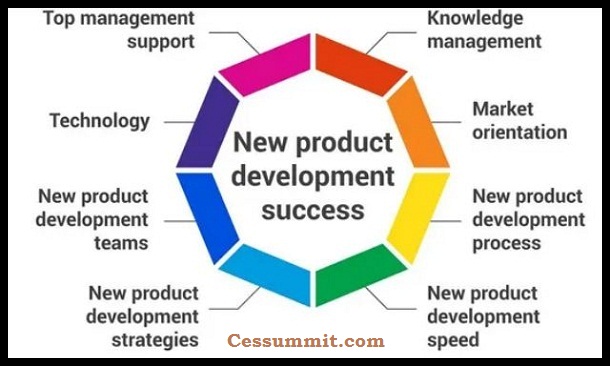
Unlocking Competitive Advantage for Best Practices in Product Development
Implementing Best Practices for Competitive Advantage
Developing a structured product development process
To implement best practices and achieve a competitive advantage, it is essential to establish a structured product development process. This process provides a framework for efficient and effective product development. Consider the following steps:
Define clear stages:
Break down the product development process into distinct stages, such as ideation, concept development, design, prototyping, testing, and launch. Clearly define the objectives, deliverables, and success criteria for each stage.
Establish gate reviews:
Conduct gate reviews at the end of each stage to evaluate the progress, quality, and viability of the product. Gate reviews involve cross-functional teams and key stakeholders to ensure alignment and decision-making.
Unlocking Competitive Advantage for Best Practices in Product Development
Implement milestones and metrics:
Define specific milestones and key performance indicators (KPIs) to track progress, measure success, and identify areas for improvement. These metrics could include time-to-market, cost targets, product quality, customer satisfaction, or market share.
Document the best practices, methodologies, and lessons learned throughout the product development process. Create a knowledge repository that can be accessed and shared by the teams involved in future projects.
Unlocking Competitive Advantage for Best Practices in Product Development
Creating cross-functional teams and collaboration
Cross-functional teams and collaboration are crucial for successful product development and achieving competitive advantage. Consider the following strategies:
Form multidisciplinary teams:
Assemble teams comprising members from different functional areas, such as engineering, design, marketing, and customer support. This diversity of expertise brings different perspectives and ensures holistic decision-making.
Foster a collaborative culture:
Create an environment that encourages open communication, trust, and collaboration among team members. Establish channels for regular communication, such as team meetings, brainstorming sessions, and collaborative tools.
Unlocking Competitive Advantage for Best Practices in Product Development
Encourage knowledge sharing:
Promote the sharing of knowledge, ideas, and best practices across teams. Encourage cross-functional training, job rotations, or knowledge-sharing sessions to foster a culture of continuous learning and collaboration.
Establish clear roles and responsibilities:
Clearly define roles and responsibilities within the cross-functional teams to ensure accountability and effective coordination. Clearly communicate expectations and empower team members to make decisions within their areas of expertise.
Unlocking Competitive Advantage for Best Practices in Product Development
Establishing effective project management techniques
Effective project management is essential for implementing best practices and achieving competitive advantage in product development. Consider the following techniques:
Set clear project objectives:
Define clear and measurable project objectives that align with overall business goals. Ensure that all team members have a shared understanding of the project’s purpose and desired outcomes.
Break down tasks and prioritize:
Break down the project into smaller tasks, prioritize them based on their importance and dependencies, and allocate resources accordingly. Utilize project management tools or methodologies like Gantt charts or Kanban boards to visualize and track progress.
Unlocking Competitive Advantage for Best Practices in Product Development
Allocate resources effectively:
Identify and allocate the necessary resources, including human resources, budget, and equipment, to ensure smooth execution of the project. Regularly assess resource needs and make adjustments as required.
Monitor and communicate progress:
Implement a robust communication plan to keep stakeholders informed about the project’s progress. Conduct regular status updates, share relevant information, and address any issues or risks promptly.
Unlocking Competitive Advantage for Best Practices in Product Development
Emphasizing continuous improvement and learning
To maintain a competitive advantage, organizations must prioritize continuous improvement and learning throughout the product development process. Consider the following strategies:
Foster a culture of innovation:
Encourage employees to experiment, explore new ideas, and challenge the status quo. Recognize and reward innovation and creative problem-solving.
Collect and analyze feedback:
Continuously gather feedback from customers, end-users, and internal stakeholders to identify areas for improvement. Incorporate this feedback into future iterations or product enhancements.
Unlocking Competitive Advantage for Best Practices in Product Development
Conduct post-launch evaluations:
Evaluate the performance of launched products against the defined success criteria and KPIs. Analyze customer feedback, sales data, and market response to identify strengths, weaknesses, and opportunities for improvement.
Implement lessons learned:
Capture and document lessons learned from each project and use them to inform future product development efforts. Encourage knowledge sharing and incorporate best practices and insights into the product development process.
Unlocking Competitive Advantage for Best Practices in Product Development
Promote professional development:
Provide opportunities for employees to enhance their skills and knowledge through training programs, workshops, conferences, or certifications. Encourage a culture of continuous learning and support employees in staying updated with industry trends and advancements.
Regularly review and update best practices:
Continuously review and update the established best practices based on new insights, market changes, or technological advancements. Stay informed about emerging methodologies, tools, and industry standards to ensure that your practices remain relevant and effective.
By implementing these strategies and emphasizing continuous improvement and learning, organizations can optimize their product development processes, adapt to changing market conditions, and maintain a competitive advantage over time.
Unlocking Competitive Advantage for Best Practices in Product Development
In conclusion, implementing best practices for competitive advantage in product development involves developing a structured product development process, fostering cross-functional teams and collaboration, establishing effective project management techniques, and emphasizing continuous improvement and learning. By integrating these practices into the organization’s culture and processes, companies can enhance their ability to develop innovative products, deliver value to customers, and outperform competitors in the market.

Unlocking Competitive Advantage for Best Practices in Product Development
Case Studies: Companies with Successful Product Development Strategies
Example 1: Company X – Leveraging customer insights for innovation
Company X, a leading technology company, has achieved a competitive advantage through its strong focus on customer insights and innovation. They have established a robust process for gathering and analyzing customer feedback to inform their product development decisions.
Company X conducts extensive market research, user surveys, and usability testing to gain a deep understanding of customer needs, pain points, and preferences. They actively involve customers in the product development process through co-creation sessions and beta testing programs.
By leveraging customer insights, Company X has been able to develop innovative products that directly address customer needs and offer unique value propositions. This customer-centric approach has resulted in higher customer satisfaction, increased market share, and a distinct competitive advantage in the industry.
Unlocking Competitive Advantage for Best Practices in Product Development
Example 2: Company Y – Streamlining product development through agile methodologies
Company Y, a software development company, has successfully streamlined its product development process by adopting agile methodologies. They have implemented practices such as Scrum and Kanban to enable rapid iterations, faster feedback loops, and efficient collaboration among cross-functional teams.
Company Y breaks down projects into smaller, manageable tasks and sets clear priorities for each iteration. This allows them to deliver minimum viable products quickly and gather feedback from customers early in the development cycle.
Through the agile approach, Company Y has significantly reduced time-to-market, improved product quality, and enhanced team productivity. Their ability to respond to changing market demands and adapt to customer feedback has given them a competitive advantage, enabling them to stay ahead of competitors and deliver innovative products in a timely manner.
Unlocking Competitive Advantage for Best Practices in Product Development
Example 3: Company Z – Nurturing a culture of experimentation and risk-taking
Company Z, a consumer goods company, has fostered a culture of experimentation and risk-taking within its product development teams. They encourage employees to generate and explore new ideas, challenge conventional thinking, and take calculated risks in their product development initiatives.
Company Z provides resources, time, and support for employees to experiment and test new concepts. They establish innovation frameworks, such as hackathons or innovation workshops, where employees can collaborate and develop innovative ideas.
Unlocking Competitive Advantage for Best Practices in Product Development
By nurturing a culture of experimentation, Company Z has been able to introduce groundbreaking products to the market, differentiate themselves from competitors, and capture new customer segments. They have created a reputation for innovation and have a sustained competitive advantage in their industry.
These case studies highlight the importance of customer-centricity, agile methodologies, and fostering a culture of experimentation in achieving a competitive advantage in product development. By leveraging these strategies, companies can drive innovation, deliver value to customers, and stay ahead in today’s dynamic and competitive business landscape.
Unlocking Competitive Advantage for Best Practices in Product Development
Overcoming Challenges in Implementing Best Practices
Resistance to change and organizational culture
Implementing best practices in product development can face resistance from employees who are accustomed to existing processes and resistant to change. To overcome this challenge:
Communicate the benefits:
Clearly communicate the reasons for implementing best practices and the benefits they bring to the organization, such as improved efficiency, higher quality products, and competitive advantage. Highlight how the changes align with the company’s goals and vision.
Involve key stakeholders:
Involve key stakeholders, including employees at all levels, in the decision-making process. Seek their input, address their concerns, and emphasize the importance of their role in driving the success of the changes.
Unlocking Competitive Advantage for Best Practices in Product Development
Provide training and support:
Offer training programs and resources to help employees understand and adapt to the new practices. Provide ongoing support, coaching, and guidance to ensure a smooth transition.
Lead by example:
Senior management and leaders should demonstrate their commitment to the new practices by actively participating, providing support, and recognizing and rewarding employees who embrace the changes.
Unlocking Competitive Advantage for Best Practices in Product Development
Resource constraints and budget considerations
Implementing best practices in product development may require additional resources and investment. To address resource constraints and budget considerations:
Prioritize initiatives:
Identify the key areas where implementing best practices will have the most significant impact and focus resources on those areas. Prioritize initiatives based on their potential for improving efficiency, enhancing product quality, or generating higher returns.
Optimize resource allocation:
Evaluate existing resources and identify opportunities to optimize their allocation. This may involve reallocating personnel, leveraging cross-functional teams, or seeking external partnerships to access specialized expertise or resources.
Unlocking Competitive Advantage for Best Practices in Product Development
Justify the investment:
Build a compelling business case that demonstrates the return on investment (ROI) of implementing best practices. Quantify the potential benefits in terms of cost savings, increased market share, improved customer satisfaction, or faster time-to-market.
Seek alternative funding sources:
Explore options for securing additional funding, such as grants, venture capital, or internal reallocation of budgets. Consider collaborating with strategic partners who can provide financial support or share the costs of implementing best practices.
Unlocking Competitive Advantage for Best Practices in Product Development
Balancing speed-to-market with quality assurance
One of the challenges in implementing best practices is striking a balance between speed-to-market and ensuring product quality. To address this challenge:
Define quality standards:
Clearly define quality standards and criteria that the product must meet. Identify critical checkpoints and quality assurance processes throughout the product development lifecycle.
Adopt agile methodologies:
Agile methodologies, such as Scrum or Kanban, enable iterative development, allowing for rapid iterations and frequent feedback. This helps balance speed and quality by ensuring that quality checks are performed at each iteration.
Unlocking Competitive Advantage for Best Practices in Product Development
Automate testing processes:
Leverage automation tools and frameworks to streamline and expedite the testing and quality assurance processes. This reduces manual efforts, speeds up testing cycles, and improves the overall efficiency of quality assurance activities.
Implement continuous integration and deployment:
Establish a continuous integration and deployment (CI/CD) pipeline to automate the build, testing, and deployment processes. This allows for faster and more reliable releases while ensuring that quality checks are performed throughout the pipeline.
Unlocking Competitive Advantage for Best Practices in Product Development
Foster a culture of quality:
Instill a culture of quality across the organization, emphasizing the importance of delivering high-quality products. Empower team members to take ownership of quality assurance and encourage collaboration between development and quality assurance teams.
By addressing these challenges, organizations can effectively implement best practices in product development while ensuring that speed-to-market and product quality are balanced to achieve a competitive advantage.
Unlocking Competitive Advantage for Best Practices in Product Development
Measuring and Evaluating the Impact of Best Practices
Establishing key performance indicators (KPIs)
To measure and evaluate the impact of best practices in product development, it is crucial to establish relevant key performance indicators (KPIs). KPIs should align with the organization’s goals and reflect the desired outcomes of implementing best practices. Some common KPIs include:
Time-to-market:
Measure the time it takes to bring a product from ideation to launch. A shorter time-to-market indicates improved efficiency and agility in product development.
Product quality:
Evaluate the quality of the products developed by monitoring metrics such as defect rates, customer complaints, or customer satisfaction surveys. Higher product quality demonstrates the effectiveness of best practices in ensuring customer satisfaction.
Unlocking Competitive Advantage for Best Practices in Product Development
Cost efficiency:
Assess the cost efficiency of product development by monitoring factors such as budget adherence, resource utilization, and cost per unit. Effective implementation of best practices should lead to improved cost management and reduced expenses.
Monitor changes in market share to evaluate the impact of best practices on competitive positioning. Increasing market share suggests that the implemented practices are helping the organization gain a competitive advantage.
Unlocking Competitive Advantage for Best Practices in Product Development
Conducting regular performance assessments
Regular performance assessments are essential to evaluate the impact of best practices and identify areas for improvement. These assessments can include:
Data analysis:
Analyze the collected data and KPIs to assess the performance of product development initiatives. Identify trends, patterns, and areas of strength or weakness.
Stakeholder feedback:
Gather feedback from internal and external stakeholders involved in the product development process. This feedback can provide valuable insights into the effectiveness of the implemented best practices.
Post-launch evaluations:
Evaluate the performance of launched products by comparing them against predefined success criteria and conducting post-launch reviews. Assess customer feedback, sales data, and market response to determine the product’s success and the effectiveness of the implemented practices.
Unlocking Competitive Advantage for Best Practices in Product Development
Adjusting strategies based on feedback and results
Based on the findings from performance assessments, organizations should be ready to adjust their strategies and practices to further improve product development. This can involve:
Continuous improvement:
Identify areas for improvement based on feedback and results. Use this information to refine existing practices, optimize processes, and address any shortcomings.
Adaptation to market changes:
Stay responsive to evolving market trends and customer needs. Adjust strategies and practices to align with changing market dynamics, technological advancements, and competitive landscape.
Knowledge sharing:
Encourage knowledge sharing and lessons learned across teams and projects. Disseminate successful practices, case studies, and insights gained from evaluations to foster a culture of continuous improvement.

Unlocking Competitive Advantage for Best Practices in Product Development
Read More:
- Blockchain Technology: The Future of Financial Services and Banking
- Leveraging Blockchain for Secure and Transparent Digital Identity Management
- The Role of Blockchain Technology in Cryptocurrency
- The Potential Benefits of Adopting E-Naira in Business Operations
- The Role of E-Naira in Fostering Financial Inclusion for Business Owners
- E-Naira and Digital Marketing in Nigeria
- How to Write Winning Proposals that Close Deals
- How to Raise Funds for Your Project by Crowdfunding
- Cessummit.com Services Offerings: What we do & How
- Profitable Business Idea
Summing up: Unlocking Competitive Advantage for Best Practices in Product Development
Best practices in product development play a crucial role in achieving competitive advantage. They enable organizations to optimize their processes, deliver high-quality products, respond to market demands, and create a sustainable competitive edge.
Implementing best practices gives organizations a strategic advantage by differentiating their products from competitors, meeting customer needs more effectively, and staying ahead of industry trends. Competitive advantage enables organizations to outperform rivals, attract customers, and achieve long-term success.
Unlocking Competitive Advantage for Best Practices in Product Development
To thrive in the ever-evolving business landscape, organizations must emphasize continuous improvement and adaptation. By regularly measuring and evaluating the impact of best practices, adjusting strategies based on feedback and results, and fostering a culture of learning and innovation, organizations can remain agile, responsive, and competitive in the product development arena.
By implementing and continuously refining best practices, organizations can unlock their full potential in product development, drive innovation, and achieve sustainable growth in an increasingly competitive market
